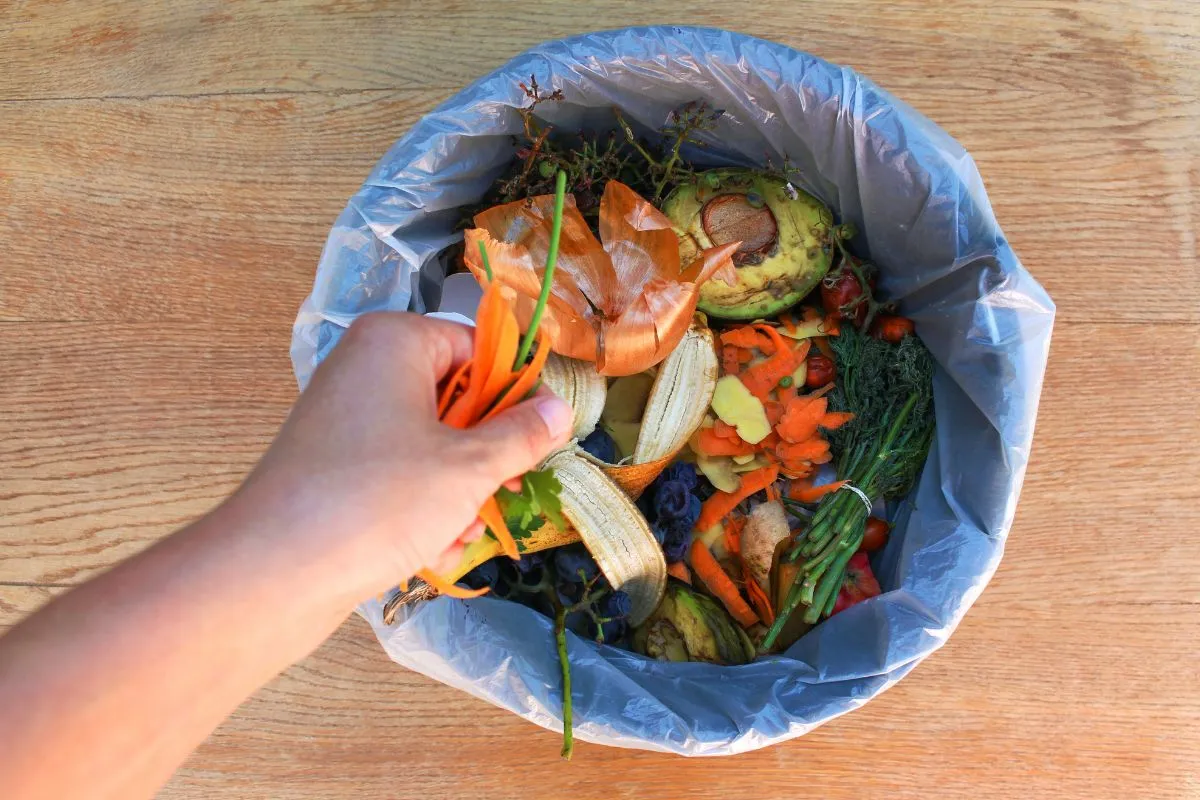Recycling Food Waste: A Path to Sustainability
Food waste is a significant global issue, with approximately 1.3 billion tons of food wasted each year. This staggering amount not only represents a colossal waste of resources but also contributes to environmental degradation and greenhouse gas emissions.
Recycling food waste presents a sustainable solution that can benefit various stakeholders, including families, businesses, and the environment. By understanding the importance of food waste recycling, we can make informed decisions that promote a healthier planet.
Understanding Food Waste
Food waste refers to edible food that is discarded, lost, or uneaten. It occurs at various stages of the food supply chain, including production, processing, distribution, retail, and consumption. Understanding the causes and consequences of food waste is crucial in addressing this problem effectively.
Causes of Food Waste
Overproduction
Farmers often grow more food than the market can absorb, leading to surplus that ultimately goes to waste. Overproduction can stem from various factors, including consumer demand fluctuations and miscalculations in yield estimates.
Transportation Issues
Damage or spoilage during transport can lead to significant losses. Poor handling and inadequate storage conditions during transportation can drastically reduce food quality, leading to waste before it even reaches consumers.
Consumer Behavior
Poor meal planning and misunderstanding of expiration dates can result in unnecessary waste. Many consumers discard food that is still perfectly safe to eat simply because they misinterpret “best by” dates or overestimate their cooking needs.
Retail Practices
Supermarkets often reject food items based on cosmetic standards. Products that do not meet aesthetic criteria, such as odd shapes or minor blemishes, are frequently discarded, contributing to substantial food waste.
Environmental Impact
The environmental impact of food waste is profound and multifaceted:
- Greenhouse Gas Emissions: Decomposing food in landfills produces methane, a potent greenhouse gas that is significantly more effective at trapping heat in the atmosphere than carbon dioxide.
- Resource Waste: Food waste leads to the waste of resources used in production, including water, energy, and labor. It is estimated that about 25% of the freshwater used in agriculture goes to food that is ultimately wasted.
- Loss of Biodiversity: Unsustainable farming practices to meet demand can lead to habitat destruction and loss of biodiversity. This environmental degradation not only affects ecosystems but also threatens food security.
Benefits of Recycling Food Waste
Recycling food waste can yield numerous benefits, including:
1. Environmental Benefits
- Reduction of Landfill Waste: Composting food scraps reduces the volume of waste sent to landfills. By diverting organic waste, we can extend the lifespan of existing landfills and minimize the need for new ones.
- Lower Carbon Footprint: By recycling organic matter, we can significantly decrease greenhouse gas emissions. Composting helps sequester carbon, contributing positively to climate change mitigation.
2. Economic Benefits
- Cost Savings for Households: Families can save money by minimizing food purchases and making use of leftovers. Proper meal planning and understanding food preservation techniques can further reduce unnecessary spending.
- New Business Opportunities: The composting industry is growing, providing job opportunities and economic benefits. Composting facilities, collection services, and education programs create jobs and stimulate local economies.
3. Nutrient-Rich Soil
- Soil Health: Composting food waste produces nutrient-rich soil that enhances plant growth. This improves soil structure, increases moisture retention, and supports beneficial microorganisms.
- Sustainable Agriculture: Using compost in farming reduces the need for chemical fertilizers. This not only cuts costs for farmers but also supports sustainable farming practices that protect the environment.
Methods of Recycling Food Waste
There are several effective methods for recycling food waste:
1. Composting
Composting involves collecting organic waste and allowing it to decompose naturally. It can be done at home or on a larger scale, such as community gardens or municipal facilities.
How to Start Composting
- Choose a Compost Bin: Select a bin that fits your space and needs. There are various types, including traditional bins, tumblers, and worm composters.
- Collect Organic Waste: Include fruit and vegetable scraps, coffee grounds, eggshells, and yard waste. Avoid adding meat, dairy, and oily foods, as these can attract pests.
- Maintain the Pile: Turn the compost regularly to aerate it and speed up decomposition. The ideal carbon-to-nitrogen ratio is about 30:1 for optimal composting.
Benefits of Composting
- Reduces landfill waste: Diverts a significant portion of organic waste from landfills.
- Creates valuable soil amendments: Enhances soil health and fertility, contributing to healthier plants and increased agricultural productivity.
2. Anaerobic Digestion
Anaerobic digestion is a process that involves breaking down organic material in the absence of oxygen. This process produces biogas that can be used for energy.
How Anaerobic Digestion Works
- Feedstock Preparation: Organic waste, including food scraps and agricultural residues, is collected and prepared.
- Digestion Process: The waste is placed in a sealed tank, where microorganisms break it down, producing biogas and digestate.
- Energy Production: The biogas can be captured and used to generate electricity, heat, or fuel.
Benefits of Anaerobic Digestion
- Energy Production: Biogas can be harnessed for electricity or heating, providing a renewable energy source.
- Digestate as Fertilizer: The remaining material can be used as a high-quality fertilizer, promoting sustainable agriculture practices.
3. Food Rescue Programs
Food rescue initiatives involve salvaging surplus food from restaurants and grocery stores to redistribute to those in need.
How Food Rescue Works
- Partnerships: Food rescue organizations partner with local businesses to collect surplus food.
- Distribution: The salvaged food is then distributed to food banks, shelters, and community organizations.
Benefits of Food Rescue Programs
- Addresses Hunger: Provides meals to individuals and families facing food insecurity, ensuring that food goes to those who need it most.
- Reduces Waste: Minimizes the amount of edible food that goes to waste, significantly lowering the overall food waste footprint.
Implementing Food Waste Recycling in Your Community
To successfully implement food waste recycling, communities can take the following steps:
1. Raise Awareness
Educating the community about the importance of recycling food waste can foster participation. Host workshops, seminars, and community events to share information about the benefits and methods of recycling food waste.
2. Provide Resources
Local governments and organizations should offer resources, such as compost bins, educational materials, and workshops, to assist residents. Providing easy access to composting and recycling tools can encourage community participation.
3. Collaborate with Local Businesses
Partnering with local restaurants and stores can promote food rescue initiatives and encourage participation in recycling programs. Businesses can implement waste reduction strategies and donate surplus food, enhancing their corporate social responsibility.
4. Monitor Progress
Tracking the impact of food waste recycling efforts can help refine strategies and demonstrate success. Regularly assess the amount of food waste diverted from landfills and the benefits realized, such as energy generated or meals provided.
5. Create Incentives
Incentives can motivate participation in food waste recycling programs. Consider offering discounts on waste disposal fees for businesses that implement food waste recycling practices or for residents who participate in community composting programs.
Real-World Examples of Successful Food Waste Recycling
Many cities and organizations have successfully implemented food waste recycling programs, showcasing effective strategies and their positive impact.
1. San Francisco’s Zero Waste Program
San Francisco is renowned for its ambitious zero waste goal. The city has implemented mandatory composting and recycling laws, diverting more than 80% of its waste from landfills. The program includes educational outreach, accessible composting options, and strict regulations on waste disposal.
2. The Food Recovery Network
This national organization connects college students with local food businesses to rescue surplus food. The Food Recovery Network has successfully rescued millions of pounds of food, redistributing it to those in need while reducing food waste on campuses.
3. The Love Food Hate Waste Campaign
Originating in the UK, this campaign focuses on reducing food waste at the household level. Through education and resources, it encourages consumers to plan meals, store food properly, and use leftovers creatively. The campaign has seen a significant decrease in food waste and raised awareness about the issue.
Conclusion
Recycling food waste is a critical component of creating a sustainable future. By understanding the causes and impacts of food waste, we can adopt effective recycling methods that benefit individuals, communities, and the planet.
Whether you are a homeowner looking to compost or a restaurant owner interested in food rescue programs, every action counts in reducing food waste and promoting sustainability.
Incorporating food waste recycling into our daily lives is not just a responsibility but an opportunity to contribute to a healthier environment. Let’s work together to make a difference, turning waste into a valuable resource for our communities and future generations!





